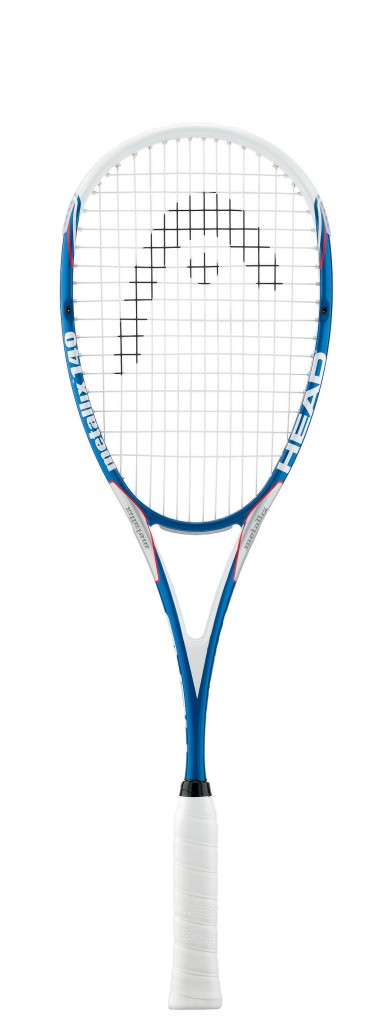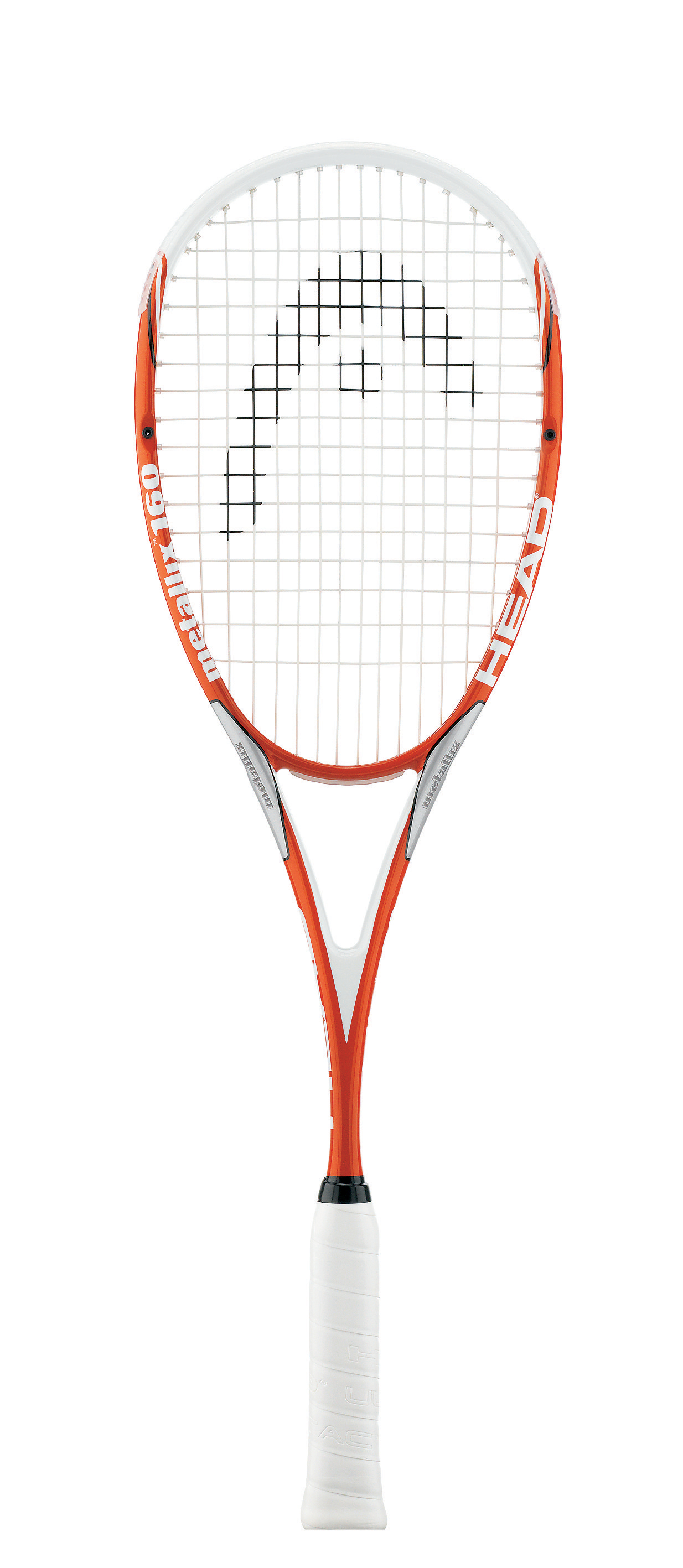
 Nearly two years ago, HEAD migrated it’s Metallix™ technology from tennis to squash by updating their Flexpoint™ line of sticks. Back in December 2006 we took the Metallix™ 150 for a test drive and were impressed with its power and control. The same can be said for the 150 brethren: the 140 and the 160.
Nearly two years ago, HEAD migrated it’s Metallix™ technology from tennis to squash by updating their Flexpoint™ line of sticks. Back in December 2006 we took the Metallix™ 150 for a test drive and were impressed with its power and control. The same can be said for the 150 brethren: the 140 and the 160.
As a refresher, the concept behind Metallix™ is to weave together a matrix of carbon fibers and metal alloy with grain size 1000 times smaller than that of typical metal. Translation? Stiffer material in the same frame. But that’s where the comparisons to the 150 end.
The Metallix™ 140 weighed in at 159g (strung) with head-heavy balance. However, despite sporting the same weight in the top 12 inches as the bottom 14 ¾, the 140 feels relatively light and swings easily. As a result, it’s easy to put a lot of power into the ball because you can swing as hard as you like with little effort. And the added stiffness of the frame offers excellent feel for the ball on the short game.
The Metallix™ 160, on the other hand, checked in at 173g (strung) and is also head-heavy. While the 160 also comes loaded with power, it will take more effort because this sucker feels brawny from the get go. Not for the faint of heart, the 160 takes a bit of elbow grease to get it going, but when it does the power is awesome. Again, the frame is stiff like the rest of the Metallix™ family, so it actually does have good feel. This stick just isn’t made for the petite player.
 Both the 140 and 160 also feature an open throat frame, 14 main strings and 16 crosses (resulting in a relatively dense string pattern and, therefore, more control because the strings won’t move too much) and a large handle (diameter). New to these sticks is more of an oval shape to the handle. In the past, HEAD handles were fairly rectangular with corners. Those corners have been knocked off and rounded.
Both the 140 and 160 also feature an open throat frame, 14 main strings and 16 crosses (resulting in a relatively dense string pattern and, therefore, more control because the strings won’t move too much) and a large handle (diameter). New to these sticks is more of an oval shape to the handle. In the past, HEAD handles were fairly rectangular with corners. Those corners have been knocked off and rounded.
HEAD has thrown itself into the ring of manufacturers trying to get a piece of the squash ball market. HEAD’s Championship ball looks and feels like the double yellow dot we’re all used to. During the warm-up, everything played as expected. However, once warm, the ball becomes relatively lively off the front wall. Our experience with the ball was that it felt fine on impact with the racquet strings (though some thought it felt “heavy”), but that the Championship ball seemed to spring off the front wall. As a result, the ball came back quicker than expected.
As far as durability is concerned, we were able to play several matches with little change in the playing characteristics. Bottom line is the Championship ball takes some getting used to as a result of it’s liveliness, so it could be a good alternative as long as you aren’t expecting it to play exactly the way you’re used to your ball reacting.
For more information, visit www.head.com/squash





